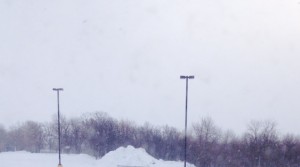The Real Story of Technology in Rural Schools
This is something that has bothered me for a long time. When I read tables and reports from the National Center of Education Statistics (yes, I do, don’t judge me!), it makes it sound as if all is well with rural education.
All is well in the heartland, yes?
As someone who has spent a good bit of my life freezing my ass in the heartland, I am pretty darn certain that all is NOT well when it comes to educational technology.
I read government pronouncements about what we should be doing and who we should be working with (reports I will not quote since I still maintain hopes of some day being funded by certain agencies) and I am convinced their recommendations will NOT work everywhere.
Let’s take the very different access to fiber optic networks in rural versus urban schools.
I read about and meet with Silicon Valley ed tech experts telling me that everything needs to be “in the cloud” and that our insistence on delivering software to schools via flash drives, downloading on to laptops or desktops, even apps installed on tablets, is outmoded.
Well, let me tell YOU something – 12 million children attend schools in rural communities, that’s 24% of the student population. Do you know what the difference is between cable and fiber optic speeds? It is so different that a game that takes less than two minutes to download in my office in Santa Monica takes two HOURS to download when I’m in many school sites in North Dakota. Of course, if your connection drops, you may end up starting all over again.
Since I don’t want to base my conclusion on a single state or my own experience, I asked a couple of teachers I knew, in central Missouri and in central California, to try the same download and tell me how long it took them. In both cases, it was about an hour. Now, just think about this for a minute –
Download speeds are 30 to 60 times slower in many rural schools than in urban areas.
As I said, this has been bugging me for a long time, because I have been working with rural schools for decades and just about everything I witnessed convinced me that this was a problem that many people at the national level never even considered.
So, I was actually relieved to come across this post by the FCC Chair, Thomas Wheeler who noted, “41% of rural schools could not get fiber optic access if they tried”.
It’s not just me and the people that I know! The fact is that it’s really expensive to install fiber optic connections in rural communities. This isn’t to say that it will never happen, nor that some other, as yet unknown technology might not emerge to supplant fiber optics and solve the rural-urban digital divide when it comes to download speed. However, it definitely hasn’t happened YET.
This is why, although we are working on complete web-based games, we are ALSO continuing those that download once, or install from a flash drive and then require minimal Internet speed to perform exceptionally well. Personally, I think 24% of the population is a whole lot of school children to leave behind.
—— Want to sponsor a classroom or school?
Click here and then pick the game you want to donate.

